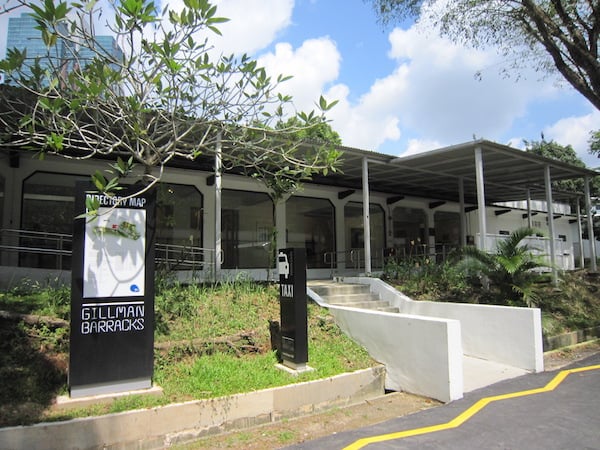
Photo via: SG

Lorena Muñoz-Alonso

Gillman Barracks, Singapore’s ambitious gallery hub, has hit the rocks: almost a third of the galleries that set up shop there won’t be renewing their leases, the Straits Times reports.
The galleries that have decided to leave are The Drawing Room, Equator Art Projects, Space Cottonseed, Tomio Koyama Gallery, and Silverlens, all of which are focused on Asian art.
The dealers cite poor sales and declining footfall as the main reasons behind their decision.
The art complex—which hosts the Center for Contemporary Art (CCA) and three restaurants, as well as 17 commercial galleries across 6.4 hectares—was launched to great fanfare in September 2012.
The government backed the project, which entailed a $10 million revamping of the former military site where it is located. Originally built in 1936, Gillman Barracks are named after General Sir Webb Gillman, a well-known British army officer.
The Economic Development Board (EDB), one of the main developers of the project, had high hopes for the initiative, which was modeled on Beijing’s 798 District and poised to become one of the beacons of Singapore’s emerging art scene (see Inaugural Edition of Singapore Art Fair Kicks Off).
High Overheads and Poor Sales
But, for many, the new hub didn’t deliver. “This end of Gillman has quite simply not worked out as well as the other end,” Equator Arts Project’s Tony Godfrey told the ST. “We just have not sold enough works. For many of us, it has sadly been a missed opportunity. This is an ambitious project and I am sure eventually it will work,” he said.
According to the ST, galleries have come to realize that the number of local collectors is substantially smaller than what they had hoped for, and that the EDB’s attempts to lure international collectors have just not worked. The rental prices—which range from $4,000 to $5,000 a month, depending on the space—might have also discouraged some of the renewals.
But for art consultant Valentine Willie, the main problem is the commercial strategy of some of the galleries sited in the complex, which are trying to sell relatively “cheap” Southeast Asian art in Singapore, a famously expensive city.
“The high costs of Singapore are exacerbated by the lower prices of regional art relative to Chinese or Western art,” Willie told the ST.
Meanwhile, other galleries seem more than happy at the barracks. For example, Sundaram Tagore Gallery—which represents heavyweights such as Frank Stella and Annie Leibovitz—and Fost Gallery have renewed their lease.
“Both local and regional collectors have come to identify [Gillman Barracks] as Singapore’s contemporary art enclave,” Stephanie Fong, from Fost, told the ST. “It is important that I continue to build on the efforts of the past three years at Gillman Barracks and I look forward to the next phase of growth,” she said.